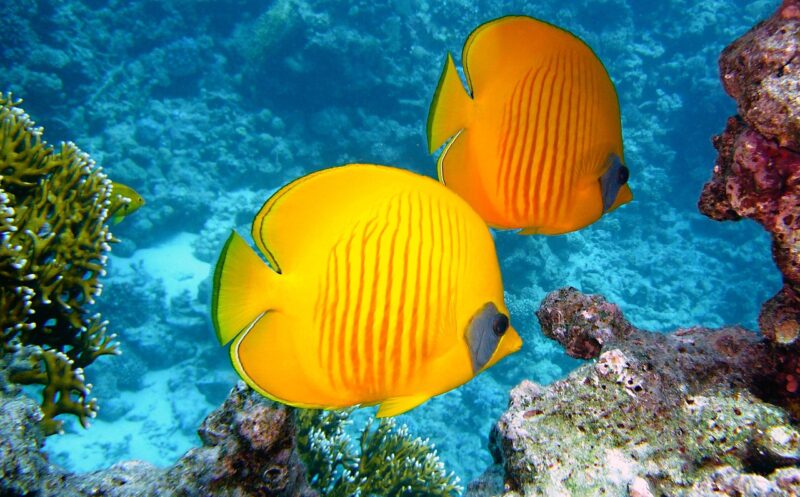Ancient Coral Reefs and the Marine Ecosystems They Supported Millions of Years Ago
November 14, 2024

Coral reefs, often dubbed the “rainforests of the sea,” are among the most diverse ecosystems on the planet, but their history extends far beyond what we observe today. Millions of years ago, ancient coral reefs played a crucial role in supporting marine life, shaping the oceans’ biodiversity, and influencing Earth’s climate. Understanding their past allows us to comprehend the invaluable ecological services they provide and their vulnerability in today’s changing world.
1. A Glimpse into the Geological History of Coral Reefs
Coral reefs began forming around 500 million years ago during the Cambrian Period. However, it was not until the Triassic Period (approximately 250 million years ago) that reefs started to resemble the intricate structures we recognize today. During this time, the oceans were abundant with diverse species of corals, including both hermatypic (reef-building) and ahermatypic (non-reef-building) corals.
The increase in coral diversity can be linked to the warm, shallow seas that prevailed during the Mesozoic Era (approximately 252 to 66 million years ago). The presence of calcareous algae also fueled coral growth by providing carbonate materials necessary for their skeletal formation. These ancient reefs not only housed an array of marine organisms but also played a significant role in stabilizing sea floors and protecting coastlines.
2. Marine Biodiversity in Ancient Coral Ecosystems
The ancient coral reefs served as keystone habitats for countless marine species. Much like today, these reefs provided essential services such as shelter, breeding grounds, and feeding areas for various marine organisms.
During the Paleozoic Era, reefs were primarily built by corals known as rugose and tabulate corals. These early corals created structures that supported a diverse array of marine life, including:
- Bivalves: Ancient clams and oysters thrived within coral reefs, filtering water and contributing to nutrient cycling.
- Crinoids: Marine animals resembling flowers that used their feathery arms to capture food particles from the water, enriching the ecosystem.
- Echinoderms: Starfish and sea urchins inhabited coral reef environments, playing pivotal roles in the ecological balance of these systems.
Interestingly, the intricate relationships and symbiotic interactions among these organisms contributed to the reefs’ growth and resilience.
3. The Role of Ancient Coral Reefs in Climate Regulation
Ancient coral reefs were more than just underwater habitats; they played a significant role in regulating the Earth’s climate. The process of calcification, through which corals draw carbon dioxide from the ocean and atmosphere to build their calcium carbonate skeletons, has helped sequester carbon for millions of years. This natural process contributed to the reduction of atmospheric CO2 levels, influencing global temperatures and climate patterns.
During periods of coral reef expansion, such as the Cretaceous Period (approximately 145 to 66 million years ago), the resulting increase in marine biodiversity and reduction in carbon levels had profound effects on the Earth’s ecosystems. Marine species flourished amidst the stable conditions created by these vibrant habitats.
4. The Extinction and Resilience of Coral Reefs
Despite their resilience, ancient coral reefs were not immune to extinction events. The most catastrophic of these was the Permian-Triassic extinction, nearly 252 million years ago, where it is estimated that up to 96% of marine species perished. The impact of this event was severe, leading to a significant transformation of marine ecosystems.
However, coral reefs have shown remarkable resilience throughout geological history. Following extinction events, reefs have rebuilt and adapted, often leading to new forms of coral assemblages and the emergence of novel marine ecosystems. The patterns of recovery provide insights into how ecosystems can respond to dramatic environmental changes.
5. Lessons from the Past: The Future of Modern Coral Reefs
As modern coral reefs face unprecedented threats from climate change, pollution, and overfishing, examining the history of ancient coral ecosystems can offer valuable lessons for conservation. The resilience demonstrated by ancient reefs showcases the adaptability of coral species to changing conditions, suggesting that modern corals may also have the potential to survive if given adequate protection and favorable conditions.
Efforts to mitigate climate change, such as reducing greenhouse gas emissions and enhancing marine protected areas, are crucial in preserving the remaining coral ecosystems. By learning from the past, we can foster a more sustainable future for our oceans.
Conclusion
Ancient coral reefs were not just beautiful underwater structures; they were complex and dynamic ecosystems that shaped marine biodiversity and influenced climate regulation for millions of years. Understanding their historical attributes is essential for addressing the challenges that modern coral reefs face today. By protecting these vital ecosystems, we can ensure the continued benefits they provide for future generations, just as they did for our ancestors millions of years ago.








